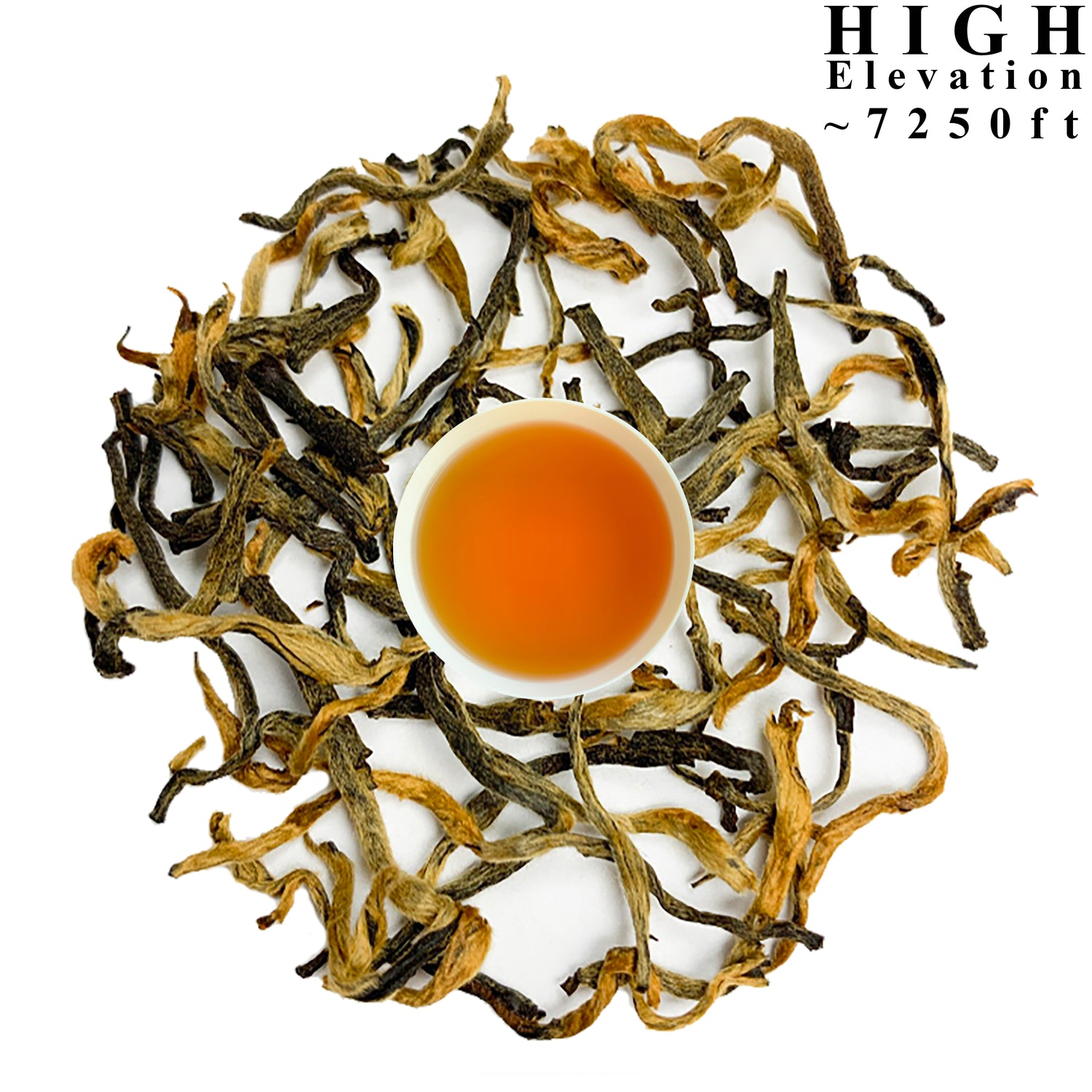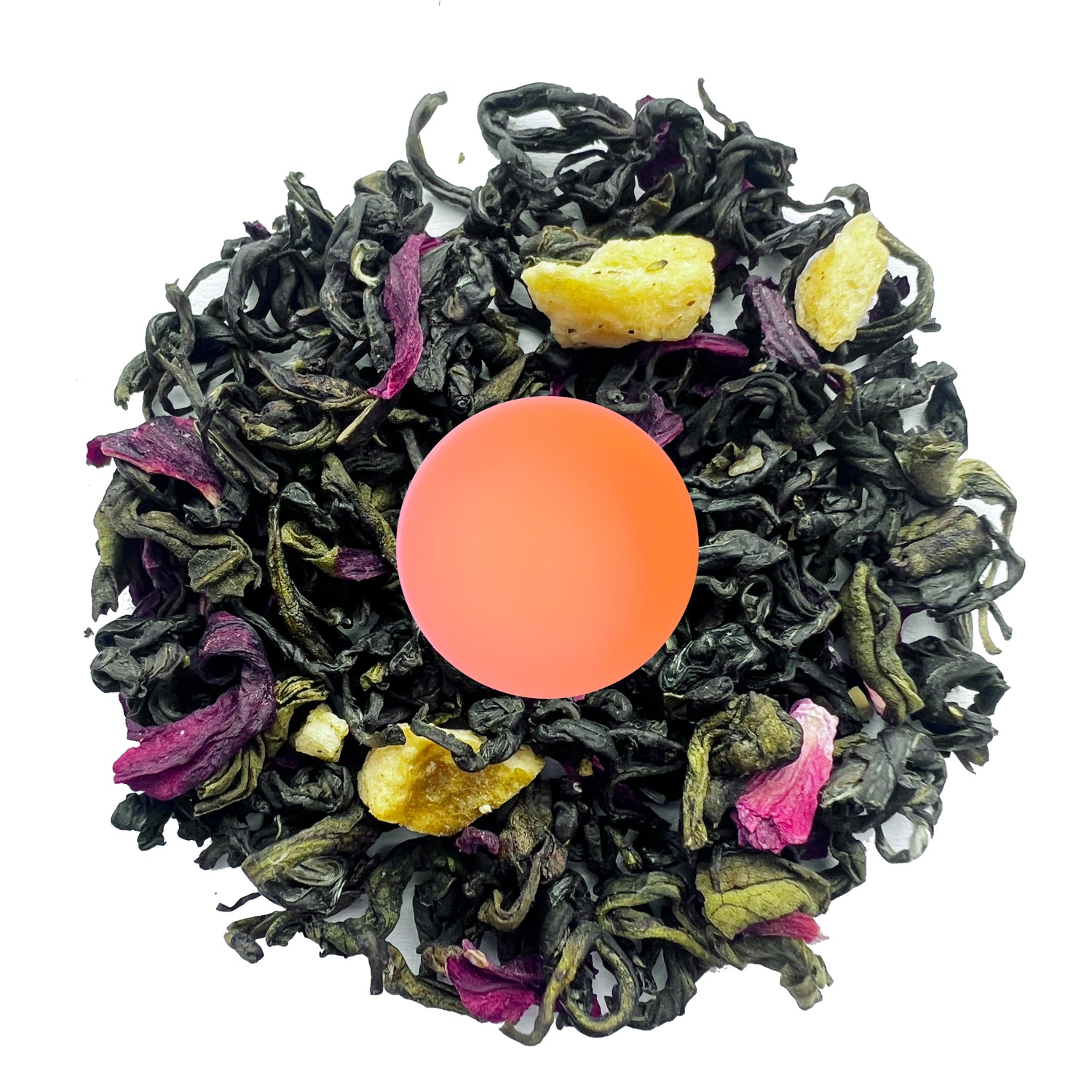
The Ultimate Black Tea vs Green Tea Comparison
Black tea vs green tea: which is better? It’s one of the most contested topics among tea lovers.
While some may prefer black tea for its robust flavor, others could choose green tea for its subtle taste and health benefits. It all comes down to personal preference, afterall.
But, if you’re a beginner and wondering what's the real difference between them, we’ve got you covered.
Difference Between Green and Black Tea
Although green tea and black tea both are from the same plant, they are two separate tea types.
Here’s a quick summary table of the differences between green and black tea. We will be discussing each of the factors in more detail below.
|
Factors |
Black Tea |
Green Tea |
|
Appearance |
Dark brown color, with usually tightly curled tea leaves. |
Green color with flat or delicate tea leaves. |
|
Processing |
The tea is processed by intensive withering, rolling, oxidation, and drying. |
The tea is processed by gentler withering, rolling, and dying. |
|
Growing regions |
Mostly grown in hot and humid climates in high elevations. |
Grown at milder and cooler climates. |
|
Flavor profile |
Strong and robust taste profile. |
Delicate and fresh flavor. |
|
Weight loss |
May contribute to weight loss but less than green tea. |
More effective for weight loss. |
|
Storing |
More shelf life. |
Shorter shelf life. |
|
Caffeine |
High caffeine. |
Less caffeine compared to black tea. |
|
Nutritional properties |
Rich in antioxidants, but slightly less than green tea. |
Higher antioxidant property. |
|
Autophagy |
Lesser autophagy effect than green tea. |
Relatively highly autophagy effect. |
Black Tea vs Green Tea
Black tea and green tea have completely contrasting characteristics. Be it in terms of appearance, processing, origin, flavor profile, sorting, benefits, and so on.
Appearance
It’s pretty clear that the appearance of black tea is dark brown to black color. While green tea has a dark to bright green color.
In case of texture, black tea usually has tightly rolled or curled leaves. On the contrary, green tea tends to have flat and delicate leaves.
When you infuse the tea, black tea gives you a reddish-copper color whereas green tea has a pale golden to mossy green color.
But, note that, the overall appearance relies on the tea type and its processing technique.
Processing Method
Although both black and green tea are from the same Camellia Sinensis plant, its processing is what makes them different.
Each tea undergoes its own unique processing stages like withering, rolling, oxidizing, drying, and so on. Let’s explore them in detail below.
Reference: Image
Withering
Black tea goes through a longer and intensive withering process, resulting in chemical and physical changes. In this stage, the caffeine and polyphenols in black tea rises.
On the other hand, green tea has a delicate withering process dedicated to stop oxidation of leaves. Once the leaves are harvested, they are either steamed or pan-fried to halt the enzymatic reactions.
Rolling
Next, the rolling process of black teas is more vigorous with motion bruises and twists of leaves. It is designed to release the enzymes and essential oils in the leaves, qualifying it for the oxidation process.
However, green tea’s rolling process is more gentle, usually done by hand for about 10-20 minutes. During this stage, green tea preserves color, flavor, and freshness of tea leaves, preparing it for the drying process.
Oxidation
Once the black tea leaves are rolled, it goes through full oxidation. The leaves are exposed to air which breaks down the enzymes, boosting the caffeine and polyphenols concentration. It’s also the main reason that these tea leaves have a dark color and robust flavor.
On the contrary, green tea skips this oxidation process. Due to this reason, the color of the leaves remain green, offering a more grassy and delicate flavor profile.
Drying
Finally, the black teas are dried at a more intense heat to stop the oxidation and cut down the moisture. It is designed especially for protecting the aroma and strong flavor of black tea.
But, the green tea goes through the drying process at a lower temperature to avoid burning the leaves. It focuses mainly on retaining the green color and delicate flavor of the tea, avoiding the bitter taste.
Origin and Growing Regions
Generally, the black teas are grown in hot and humid climates at high elevation. This setting brings in the strong and malty character of black tea. The major production regions include China, India, Nepal, Sri Lanka and Vietnam.
In case of green tea, milder and cooler climates are more favorable. Such growing conditions contribute to the freshness, vegetal, and green color of the tea leaves. It’s mainly grown in east Asian areas like china and japan.
Flavor Profile
Black teas have a more intense and robust flavor. You may get the taste of earthy, malty, smoky, fruity, and spicy notes.
Similarly, green teas offer more light, delicate, fresh, and vegetal flavor. It could have nutty, sweet, floral, or grassy taste notes.
Well, that was just a general flavor profile of black tea and green tea. The taste actually ranges with each variant.
Health Benefits
Due to the nutritional properties, each tea has the potential to provide several health benefits. Both green tea and black tea might help to improve heart health, minimize risk of stroke, skin inflammation, etc.
Nonetheless, while green tea might contribute to weight loss faster, black tea may be helpful in enhancing mental alertness.
Weight Loss
Black tea and green tea, both may contribute to weight loss. However, studies have found out that due to the catechin presence in green tea, it might be slightly more effective than black tea.
The EGCG compound may boost metabolism faster, especially burning the abdominal fat.
Storing
When comparing the two teas, black tea generally has a longer shelf life. It’s because black tea is less sensitive to the light, humidity, and temperature fluctuations. If stored well, it could last from 1-2 years.
But, you may need to be more careful when storing green tea. These teas are relatively sensitive to light exposure and humidity. Upon storing appropriately, it could remain fresh from 6 to 12 months.
Caffeine in Green Tea vs Black Tea
Are you curious whether black tea or green tea has more caffeine? Let’s find out.
Black tea has relatively more caffeine concentration than green tea. In an eight ounce serving, while there’s 47.4 mg in black tea, green tea has 29.4 mg as per the FDA.
Green Tea vs Black Tea Nutritional Facts
Black tea and green tea are both packed with abundant antioxidants like flavonoids and polyphenol.
However, comparatively green tea contains high catechin concentration, L-theanine, and less caffeine. So, green tea could be a healthier option for you.
Black tea vs Green Tea Autophagy
Autophagy means recycling the damaged cells. Researchers discovered that the green tea’s EGCG content had a stronger autophagy impact than the black tea.
FAQs
Does black or green tea have more caffeine?
Black tea has more caffeine in comparison to green tea.
Is black tea or green tea better for you?
While both tea might contribute to certain health benefits, studies have found that green tea’s antioxidant property might be slightly effective. However, when it comes to choosing tea, it’s up to you to decide the one that’s better for you. Overall, taste profile could also play a major role.
How much caffeine is in coffee vs black tea?
Coffee has twice the amount of caffeine than black tea. In an eight ounce serving, coffee could contain 96 mg whereas black tea has 47.4 mg, given by the FDA.
Is oolong tea black or green tea?
Oolong tea is neither of them. In fact, it’s a different tea type just like the black tea and green tea, possessing its own unique attributes. If you’d like to know more, we have a comprehensive article on “Everything you need to know about the Oolong tea.”
Can you mix green and black tea?
Yes, if you want, you may enjoy mixing green and black tea together.
Is green tea the same as black tea?
No, green tea is not the same as black tea. Even though these two are made from the same plant, they have different taste, appearance, processing, and caffeine content.
Why does black tea have more caffeine than green tea?
Black tea has more caffeine than green tea because they go through extensive processing. When black teas are oxidized, the caffeine concentration increases.
Conclusion
In summary, there’s no such thing as one tea is completely better than the other.
Black tea and green tea, they both have their own unique taste profile, characteristics, nutritional benefits, etc. Since we have compiled the notable differences above, we leave the decision solely up to you.
If you’d like to taste both teas first, we invite you to try our Danfe Tea’s best loose leaf teas straight from the Himalayas. We have an extensive range of finest black tea and green tea you can choose from. We’d also love to hear what differences you found out in black tea vs green tea. Kindly drop the comment below.










